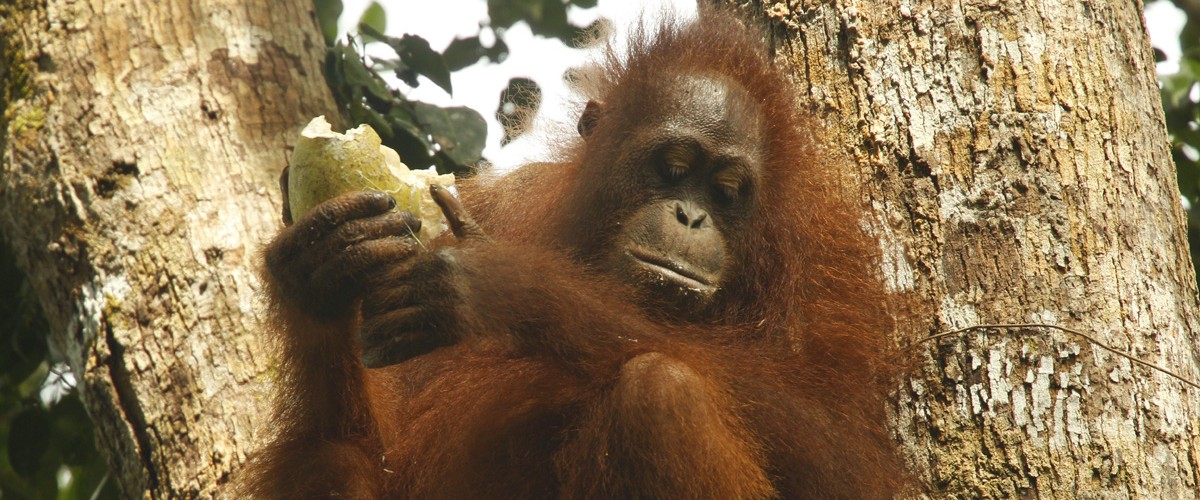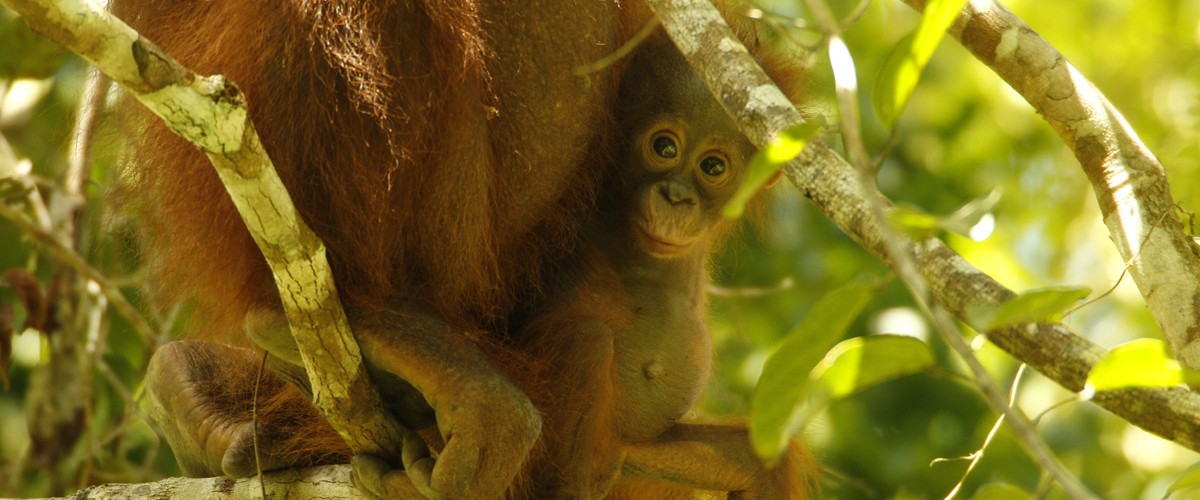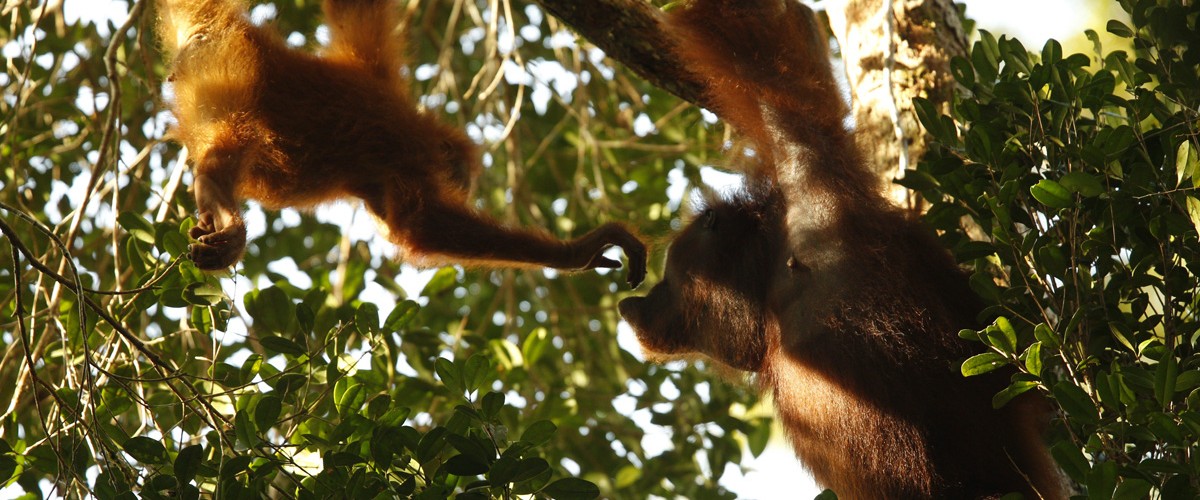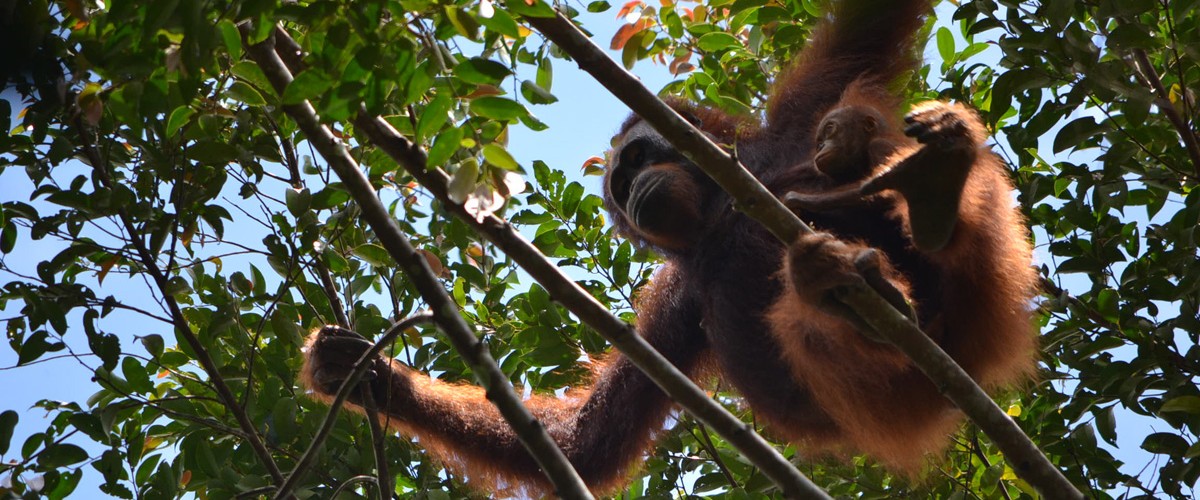By Victoria Zdanowicz, Student Researcher
I have always been drawn to nature and its change over time, but it was not until I stumbled into Dr. Cheryl Knott’s office at Boston University in search of a job, that I learned about the wonders of wild orangutans and the forests they call home. I remember sitting there, wide-eyed at the details of novel research and endless stories of life in the field. That afternoon set in motion a series of challenges, changes, and moments of self-discovery that led to where I am today – just days away from a summer of field work in Borneo.
My work in Dr. Knott’s Primate Ecology and Conservation Lab began with an immediate immersion into the daily lives of wild Bornean orangutans. During that first year, I spent countless hours summarizing data collected by the GPOCP team in Gunung Palung National Park. From istirahat (resting) to makan(eating). I learned to read and prepare activity data from orangutan focal follows so that the database could properly calculate the minutes spent in each behavior and position. As my knowledge of the project database grew, so did my familiarity with orangutan names and an assortment of Indonesian terms used in the field. I began to trace the stories and life histories of orangutans with an abundance of data like Walimah and Bibi, marveling at descriptions of cultural displays and celebrating their babies!

My early experience with data management in our computer lab prepared me to later pursue independent research projects. For my first project, I worked closely with Dr. Andrea Blackburn to explore female orangutan ranging behavior, uncovering the importance of habitat type and food availability on range overlap. I was eager to connect my Boston-based analyses to the field and hoped to spend the following summer at Gunung Palung to collect data for my senior research thesis. Unfortunately, like most things over the past few years, the pandemic forced me to rethink that plan.
I ended up spending last summer at the lab bench grinding orangutan fecal samples for fiber analysis. The goal of the project was to investigate fiber digestion between different age-sex classes. Orangutans live in very unpredictable forests, often heavily relying on the consumption of bark and leaves for months at a time. Therefore, it’s extremely important for these animals to be able to get as many nutrients as possible out of such a high-fiber diet. Our analyses showed that juvenile orangutans digested around half the amount of fiber that their mothers could, highlighting the potential role of body size in the ability to digest fiber!

Although I enjoyed learning about digestive efficiency and new lab techniques, I wanted to explore an entirely different aspect of the work at GPOCP for my senior research, more focused on conservation. I was specifically interested in comparing the intact primary forest surrounding Cabang Panti and the selectively logged forest of the Rangkong. With the establishment of new plots in this area, I had the opportunity to dig into the first full year of data from the Rangkong!
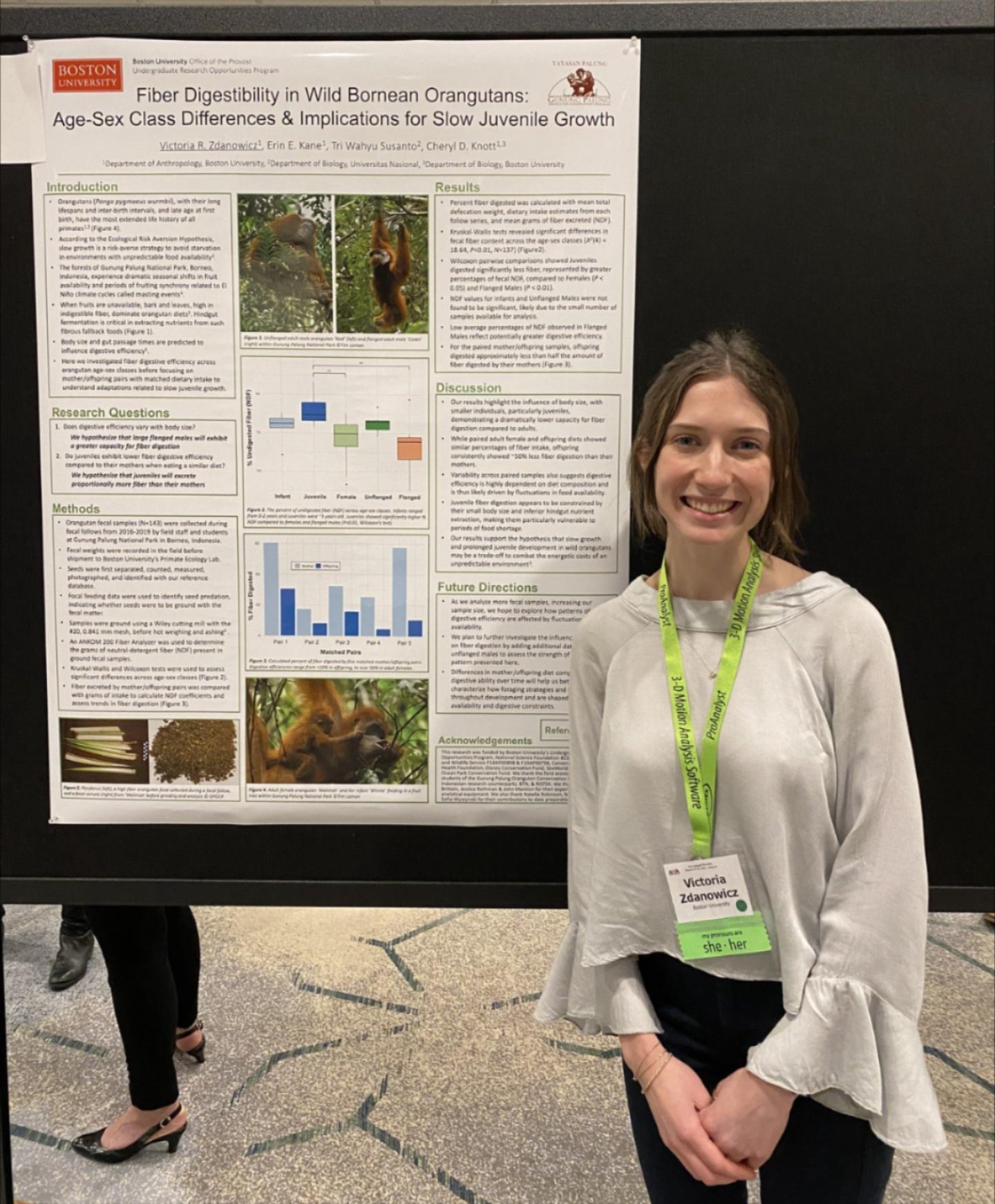
My project investigated orangutan habitat quality in these two areas by comparing forest structure and composition. I did this by estimating the diversity, abundance, and size of key orangutan feeding trees, as well as comparing measures of fruit availability. In terms of forest composition, species diversity was not significantly different between sites. However, there was dramatic variation in forest structure!
The density of small trees (DBH > 10 and < 20) was significantly higher in the Rangkong secondary forest, while the Cabang Panti primary forest showed higher densities of large trees (DBH > 30). Large trees also made up a significantly greater proportion of the total basal area (a measure of forest stand area) in the primary forest compared to the Rangkong. This lower abundance of large trees in the Rangkong reflects its history of selective logging.
I also found significant variation in the abundance and density of the main stem forms: figs, lianas, and trees. There were significantly more lianas and figs in the Cabang Panti primary forest, with nearly twice the figs and triple the number of lianas compared to the data from the Rangkong secondary forest.
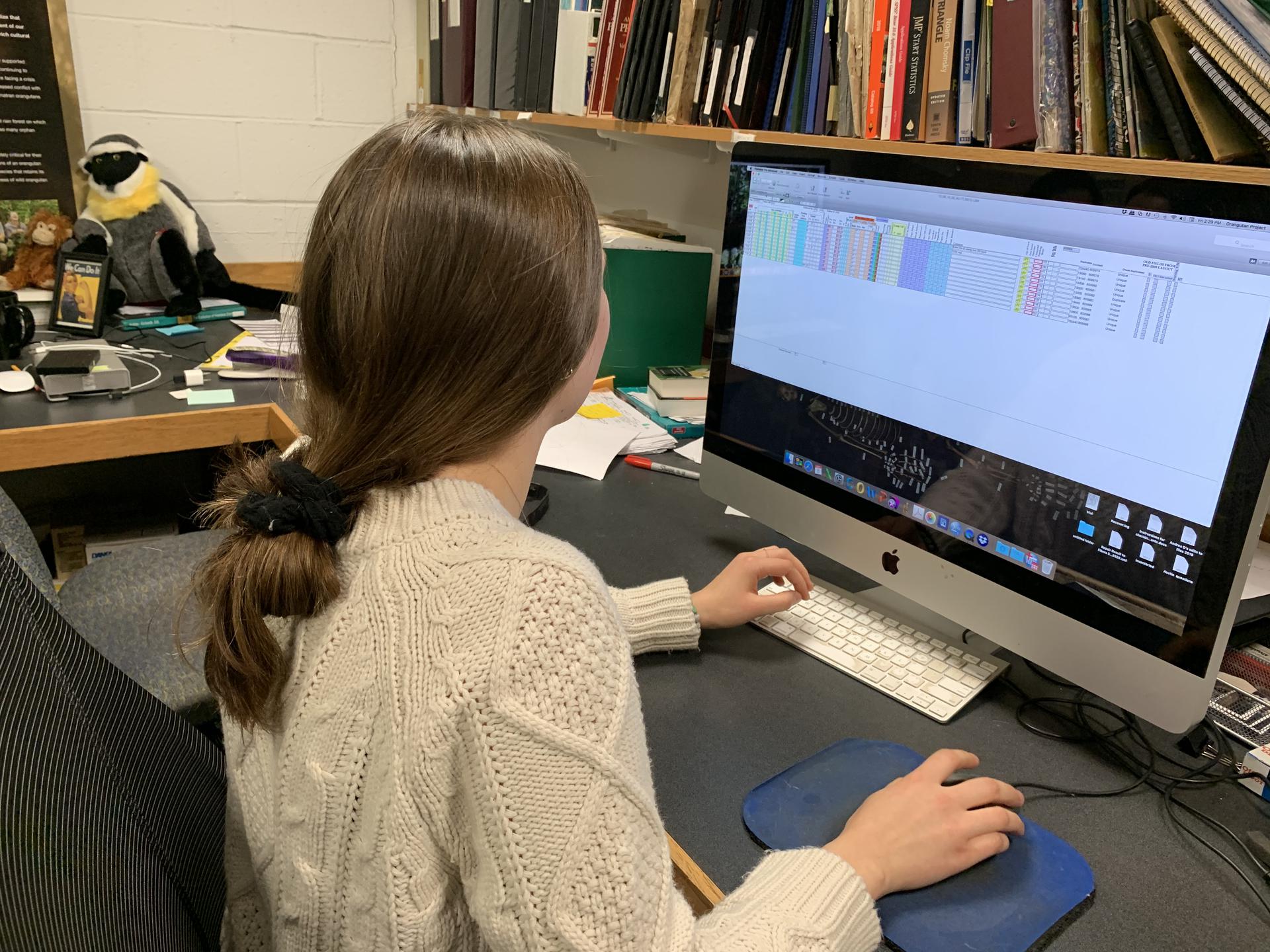
The strangler figs found in Gunung Palung National Park are an important food source for orangutans. They are hemi-epiphytes, meaning they grow on large host trees before sending roots down to the ground. In almost the opposite manner, lianas are vines that start as shrubs on the forest floor before climbing up to the canopy with the support of surrounding trees. With a lower abundance of large host trees, the Rangkong seems to be unable to support the levels of lianas and figs found at Cabang Panti. However, fruit availability in the secondary forest might be buffered by invasive species like Bellucia pentamera, which orangutans have been observed eating.
We already know that orangutans within GPNP utilize a wide range of habitats to meet their energetic requirements and buffer periods of fruit scarcity. Therefore, regardless of differences in forest structure, my analyses highlight the conservation value of the Rangkong forest. If protected from future disturbance, secondary forests like this one could provide key population support for orangutans during periods of food stress in nearby habitats.

I hope to dig deeper into the potential role invasive species play in driving orangutan habitat use and how orangutans at GPNP may incorporate resources from the Rangkong secondary forest into their overall movement ecology. As research in the Rangkong area continues to grow, and orangutans are habituated for behavioral follows, there will be even more data to incorporate into these analyses.
The last four years would not have been the same, and my thesis would not have been possible, without the knowledge and passion I uncovered while studying orangutans and learning about GPOCP’s incredible work. And while my time as an undergraduate research assistant has ended, I am grateful to be continuing my research as a graduate student at BU this fall! Even more exciting is that in just a few days I will be traveling to Borneo, ready to take on a whole new side of data collection and research. I cannot wait to get there and experience the places, the people, and the orangutans I have spent all this time with on paper and in pictures.
Stay tuned and sampai ketemu Gunung Palung!
Management of Cabang Panti Research Station is conducted by the Gunung Palung National Park Office (BTN-GP) in collaboration with GPOCP/YP. Scientific research is carried out in conjunction with the Universitas Nasional (UNAS) and Boston University.
